In the hustle and bustle of daily life, it’s easy to overlook the small details that make our spaces functional and well-maintained. One of these often-overlooked details is the humble door stop. While it might not seem like a big deal at first, the lack of a proper door stop can lead to significant damage to your walls and doors over time.
In this blog, we’ll delve into why floor door stops are essential, share some design inspiration, and provide a detailed guide on how to install them in your home or business. By the end, you’ll see why this small piece of hardware can make a big difference.
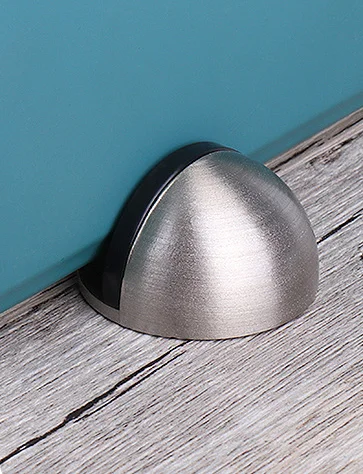
The Problem: Unchecked Door Damage
Imagine coming home after a long day, only to have your front door swing open too far, slamming against the wall. Not only does this jarring impact cause noise, but it also chips the paint, dents the drywall, or even damages the door itself. Over time, repeated impacts can create significant, unsightly damage that requires costly repairs.
This problem is common in homes and offices alike. Whether it’s a bathroom door that constantly bangs against a towel rack or an office door that dents the freshly painted wall, unchecked door movement is a problem that can easily be avoided with the right door stop.
The Solution: Floor Door Stop Installation
Floor door stops are a simple yet effective solution to prevent door damage. Unlike wall-mounted door stops, which can still cause dents or marks on your walls, floor door stops are placed strategically on the floor, stopping the door before it reaches the wall. They can be used with all types of doors, including heavy, solid wood doors, glass doors, and even lightweight interior doors.
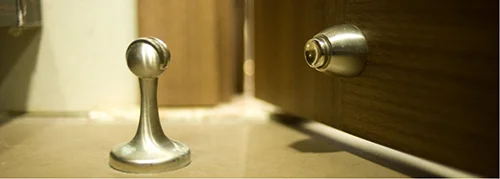
Why Floor Door Stops Are the Best Option:
• Discreet Design: Floor mounted door stops are less noticeable than wall-mounted ones, making them a subtle addition to any room.
• Effective Protection: They prevent doors from slamming into walls, protecting both the door and the wall from damage.
• Variety of Styles: Available in various designs, materials, and finishes, floor door stops can complement any interior style, from modern minimalism to traditional elegance.
E-Star Hardware offers a full range of door stoppers to meet different application. ES-DS01 Floor Door Stopper, DS006 Door Stopper which reliable for schools, hospitals, hotels and public facilities, DS003 Magnetic Door Stopper and DS004 Magnetic Stoppers apply for for home use more.
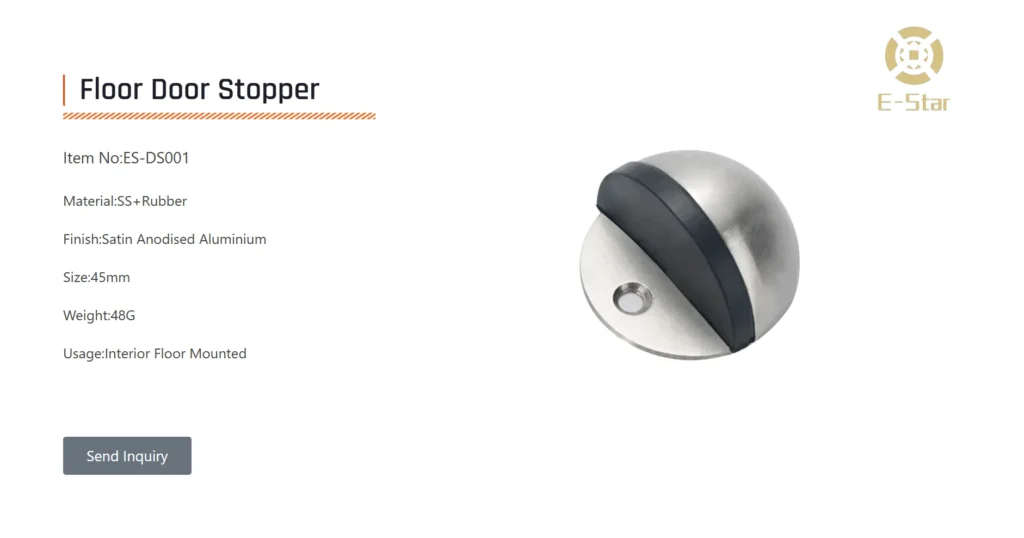
Aesthetic Appeal: How Door Stops Enhance Interior Design
While door stops serve a functional purpose, they can also contribute to the overall design aesthetic of a room. Here’s how:
Material Matters:
Floor door stops come in a range of materials, including stainless steel, brass, bronze, and rubber. Each material offers a different aesthetic:
• Stainless Steel: Ideal for modern and contemporary spaces, stainless steel door stops are sleek and minimalistic.
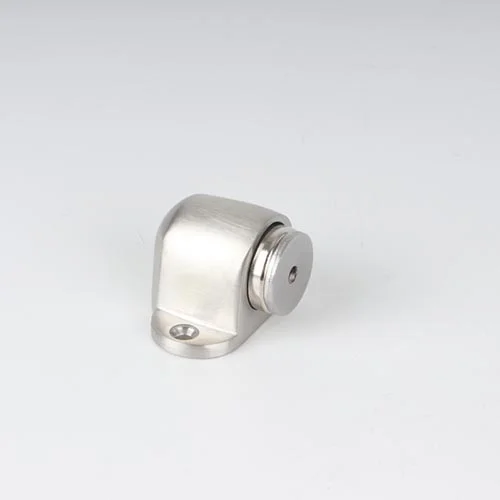
• Brass or Bronze: These materials work well in traditional or rustic interiors, adding a touch of warmth and classic charm.
• Rubber: Perfect for a softer look, rubber door stops are also practical, especially in spaces where the door stop needs to blend seamlessly with the floor.
Finish Options:
The finish of a floor door stop can either blend in with your existing hardware or stand out as a decorative element. Polished finishes add a touch of luxury, while matte or brushed finishes offer a more understated look.
Design Inspirations:
• Minimalist Interiors: Opt for a sleek, low-profile door stop in stainless steel or black, complementing a modern, minimalist room.
• Traditional Spaces: Choose a brass or bronze door stop with ornate details, adding to the timeless appeal of a traditional home.
• Industrial Style: A door stop in a matte black or dark bronze finish pairs perfectly with exposed brick walls, wooden beams, and other industrial design elements.
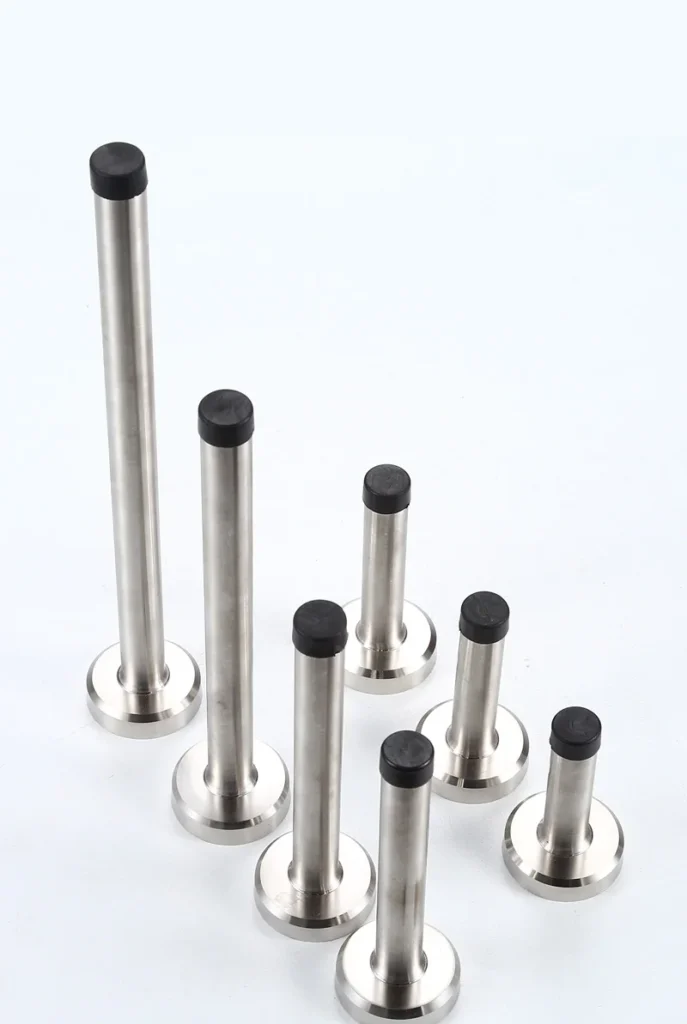
How to install door stopper on floor?
Now that you understand the importance and aesthetic potential of floor door stops, let’s dive into the floor mounted door stop installation process. This guide will walk you through each step, ensuring your floor door stop is installed correctly and effectively.
Tools and Materials Needed for Floor Door Stop Installation
• Floor door stop of your choice
• Measuring tape
• Pencil or marker
• Drill with appropriate bits (depending on your floor material)
• Screws (usually provided with the door stop)
• Wall anchors (if needed)
• Screwdriver
• Hammer (if using wall anchors)

Step 1: Floor Door Stop Placement
Start by opening the door fully to the point where you want it to stop. Measure the distance from the hinge to the edge of the door where it meets the floor. Then, measure the same distance on the floor and mark this point with a pencil or marker.
Step 2: Check for Obstacles
Before drilling, check the floor where you’ve marked the spot to ensure there are no obstacles beneath the surface, such as heating pipes or electrical wiring. This is especially important if you’re working in an older building.
Step 3: Drill the Pilot Holes
Using a drill bit that matches the size of the screws provided, drill pilot holes into the floor where you’ve marked the location. If you’re drilling into a tiled or concrete floor, make sure to use a masonry bit.
Step 4: Insert Wall Anchors (If Needed)
If you’re installing the door stop on a hollow floor or a surface that can’t securely hold screws, you’ll need to use wall anchors. Hammer the anchors into the pilot holes before proceeding.
Step 5: Attach the Door Stop
Place the door stop over the drilled holes and align it properly. Use the screws provided to attach the door stop securely to the floor. Make sure it’s tight enough that it won’t move when the door hits it.
Step 6: Test the Door Stop
Close and open the door a few times to test the door stop. Ensure that it stops the door at the right spot without any issues. Adjust as necessary.
Avoiding Common Floor Door Stop Installation Mistakes
Even with the best intentions, DIY installations can sometimes go wrong. Here are some common mistakes to avoid when installing your floor door stop:
Where should a floor door stop be placed?
One of the most common mistakes is placing the door stop too close or too far from the door. This can result in the door not stopping where you want it to, or the door stop not being effective. Always double-check your measurements before drilling. Typically, place the stop 2-4 inches from the wall to prevent the doorknob or door edge from contacting the wall.
Not Using Anchors
If you’re installing the door stop on a floor that can’t hold screws well, such as a hollow or weak surface, not using anchors can cause the door stop to become loose over time. Always use anchors in these situations to ensure a secure installation.
Choosing the Wrong Type of Door Stop
Different doors require different types of stops. A lightweight interior door might only need a small, rubber door stop, while a heavy, exterior door may require a more robust, stainless steel door stop. Make sure the door stop you choose is appropriate for the door it will be stopping.
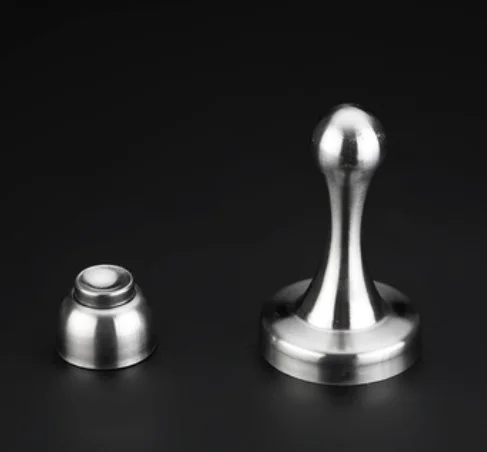
Maintenance Tips for Long-Lasting Door Floor Stops
Once installed, a floor door stop requires minimal maintenance, but a few simple steps can keep it functioning well for years to come.
Regular Checks
Periodically check the screws to make sure they haven’t loosened over time. This is especially important in high-traffic areas where the door stop is frequently used.
Cleaning Tips
Keep your door stop clean by wiping it down with a damp cloth regularly. This not only keeps it looking good but also prevents dirt and grime from affecting its functionality
Lubrication
If your door stop has moving parts, like a magnetic or spring-loaded stop, consider lubricating these parts occasionally to ensure smooth operation.
.jpg)
Conclusion: Small Details, Big Impact
A well-installed floor door stop might seem like a small detail, but it can make a significant difference in the functionality and longevity of your doors and walls. Beyond just protecting your walls, a thoughtfully chosen door stop can also complement your interior design, adding to the overall aesthetic of your space.
By following this guide, you can confidently install a floor door stop in your home or business, preventing damage and enhancing your space’s look and feel. Whether you’re opting for a sleek stainless steel stop in a modern home or a rustic bronze stop in a traditional space, this small investment will pay off in the long run.
Also if you looking for high-quality door stops? Estar Hardware from China offers reliable door stops with stable quality and fast delivery. Contact us today get a quote .